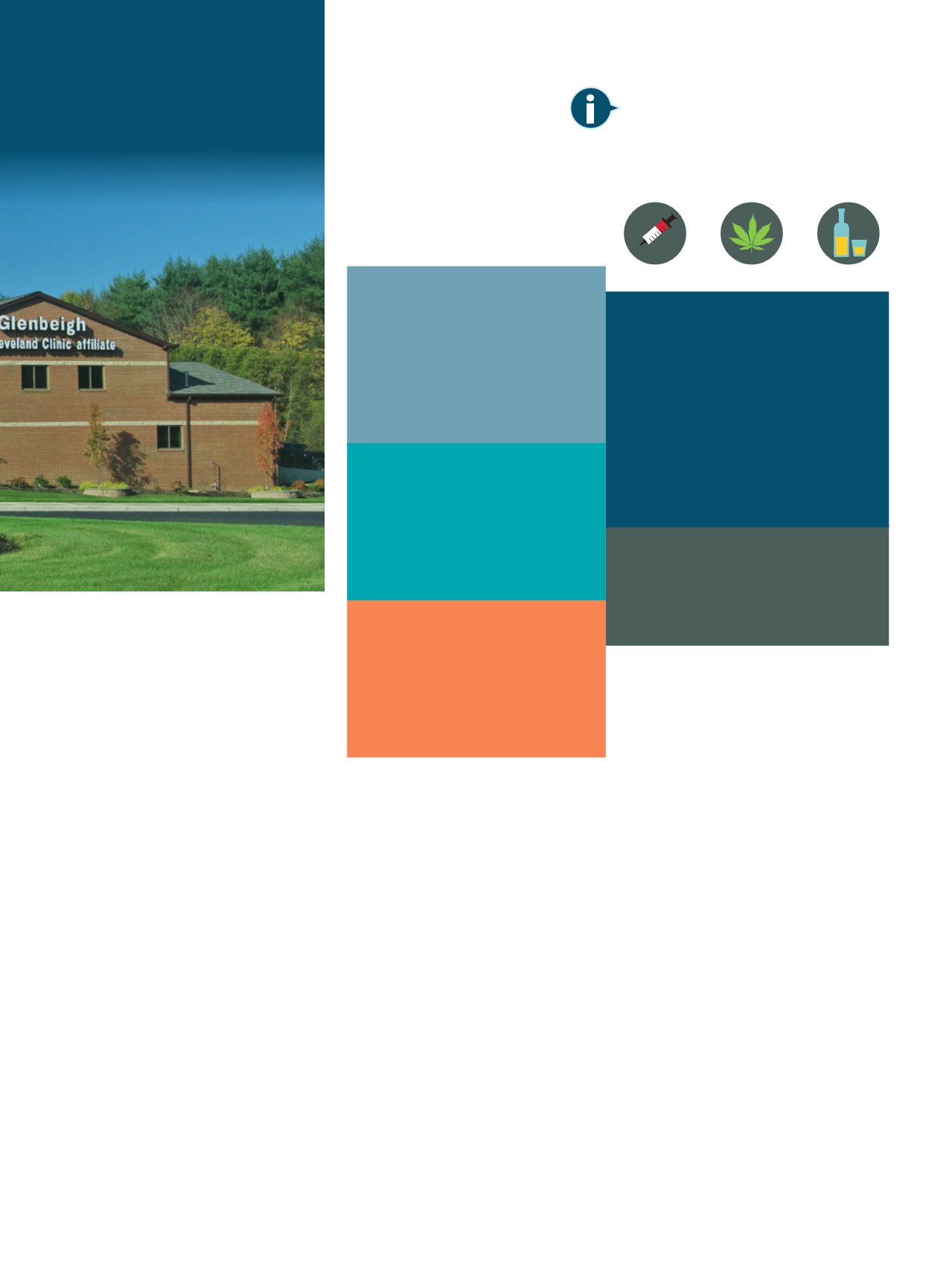

outpatient programs.
➜
➜
Comprehensive assessments.
➜
➜
Continuing care groups.
➜
➜
Sober-living opportunities.
➜
➜
Recovery community activities.
The hallmarks of Glenbeigh’s
specialty services focus on gender-
specific programming, individualized
services for licensed professionals,
pain education services, dual-
diagnosis services, relapse prevention
and family programming.
Treating the whole person—
and the whole family
Chemical dependency affects the
entire family, so Glenbeigh does not
leave loved ones without help during
the treatment process. “Families
need support, care and attention
every bit as much as the suffering
alcoholic or addict,” Weston-Hall
said. “Chemical dependency is a
disease that affects entire families,
meaning all members of the
family will have experienced hurt,
disappointment and disruption in
their lives.”
Glenbeigh’s Family Program
The rate for
unintentional
drug overdose deaths
in Northeast Ohio (2008 to 2013)
is greatest
in Trumbull
(21.8
per 100,000), Mahoning (19.7 per
100,000)
and Ashtabula (16.8 per
100,000)
counties. The state average
is 15.0 per 100,000.
Unintentional drug
overdose continues to be the
leading cause
of injury-related
death in Ohio, ahead of motor
vehicle traffic crashes, suicide and
falls. This trend began in 2007 and
has continued through 2013.
Unintentional drug overdoses
caused
2,110 deaths
to Ohio
residents in 2013 data. This is the
highest number of deaths on record
for drug overdose and surpasses the
previous highest number (1,914) in
2012 by
10.2 percent
.
Sources: Ohio Automated Rx
Reporting System, Ohio Board of
Pharmacy, Ohio Department of
Health 2013 Ohio Drug Overdose
Data and Unintentional Drug
Overdose Death Rates for Ohio
Residents by County
An overview
of Ohio’s drug
epidemic
Multiple drug use is the
largest contributor
to the
epidemic. In 2012, there was an average
of 67 doses of opioids dispensed for
every Ohio resident.
Heroin-related deaths
continued to increase in 2013,
surpassing prescription opiates
among unintentional overdose
deaths. Prescription opiates remain
a
prominent contributor
to many of the unintentional drug
overdoses. Although heroin accounts
for the majority of overdose deaths,
prescription opiates remain a significant
contributor to the overdose problem.
offers support and guidance as loved
ones learn to care for themselves
and to navigate the recovery process
of their loved ones. Family members
are encouraged to attend programs
offered at Glenbeigh’s inpatient
and outpatient centers. Services
include educational presentations,
family conferences and group
sessions to assist in developing an
understanding of addiction and
recovery. Glenbeigh’s treatment
experts help families develop an
active recovery program that will
benefit everyone. This service is
provided at no additional cost
to the patient or family because
addressing family needs is a crucial
component of the treatment
process.
GLENBEIGH IS
READY TO HELP.
For more information, call
800-234-1001
or
visit
www.glenbeigh.com.
A community resource
For 35 years, Glenbeigh has been
providing innovative care for
individuals and families suffering
with chemical dependency.
Epidemic use of prescription
drugs and heroin is creating a
greater demand for treatment.
Glenbeigh’s outpatient centers
provide therapeutic options for
those suffering from alcohol or
drug addiction and resources for
professionals who are helping
people find treatment options.
Alcohol and drug addiction is
a life-threatening but highly
treatable disease, and Glenbeigh
is committed to providing high
quality care for Ashtabula County
and beyond.
ACMC Pulse •
www.acmchealth.org13

















